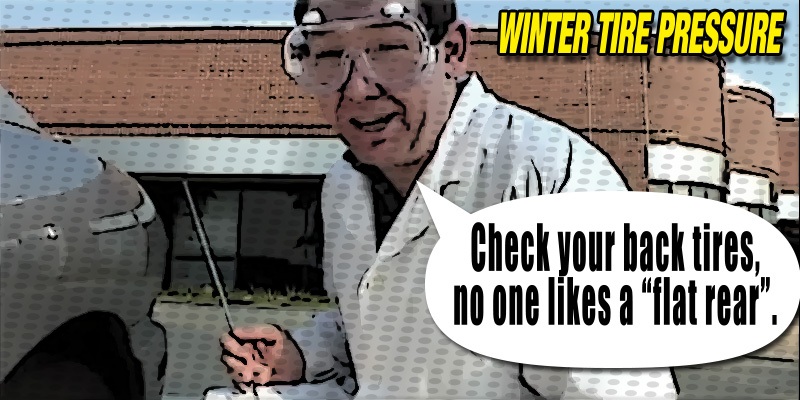We’ve already had a few freezes in Texas this month, which is not typical for November. But Mother Nature is certainly bipolar or perhaps she’s off her meds. My new car has so many crazy sensors in it. Last week, the dash lit up with a flashing sign “Warning: Tire Pressure Low.” But, which tire?? There are four of them, as I recall. I tried to ignore it as it would come on and then later in the day went off. The next morning I had the same issue with the flashing warning sign and that obnoxious “dinging.” So I went to the gas station (like I had time to kill) and aired up all four tires. I have a tire gauge, but God only knows where I put it. So I just figured I’d give them each a wee bit of air. The very next morning, there was that goofy warning sign again. My neighbor just had a new roof put on and wouldn’t it be just my luck to have a big ole roofing nail in one. I checked them all and found nothing. Then I remembered…duh…tire pressure decreases when it’s cold out. I had forgotten all about winter tire pressure.
WHY TIRE PRESSURE CHANGES WITH TEMPERATURE
Just as cold weather causes psi to drop, excessive heat can cause your tire pressure to increase. The Goodyear Tire Company says that checking tire air pressure in cold weather is the same as in the heat, but is increasingly important, as inflation tends to drop with temperatures. And for every 10 degrees of temperature drop, tires will drop 1-2 lbs of pressure. It’s just the opposite during hot weather. When the temperature drops, molecules in the air move slower and huddle together. When temperature increases, molecules move faster and farther away from one another. (Don’t be impressed, I’m not that smart, I read it on the Firestone Tire website). I have witnessed this, although when my yoga ball ended up in the backyard all last winter and shrunk to the size of a basketball.
WHAT SHOULD TIRE PRESSURE BE IN WINTER OR DURING COLD WEATHER
It should always be whatever your car manufacturer specifies. Typically tire pressure recommendations are between 30 and 35 psi. Although your low tires will recover when the weather warms up, it is still important to not drive with low tire pressure to maintain traction, handling, and durability. Low tire pressure can lead to increased stopping time, poor fuel economy, and a decreased tire lifespan. And we all know how big of a pain it is to buy new tires during the holidays when we have more important things to be buying (Jack Daniels).
Until next week…
Daun Thompson
Writer / Comedienne / Artist
WINTER TIRE PRESSURE – Comedy Defensive Driving

